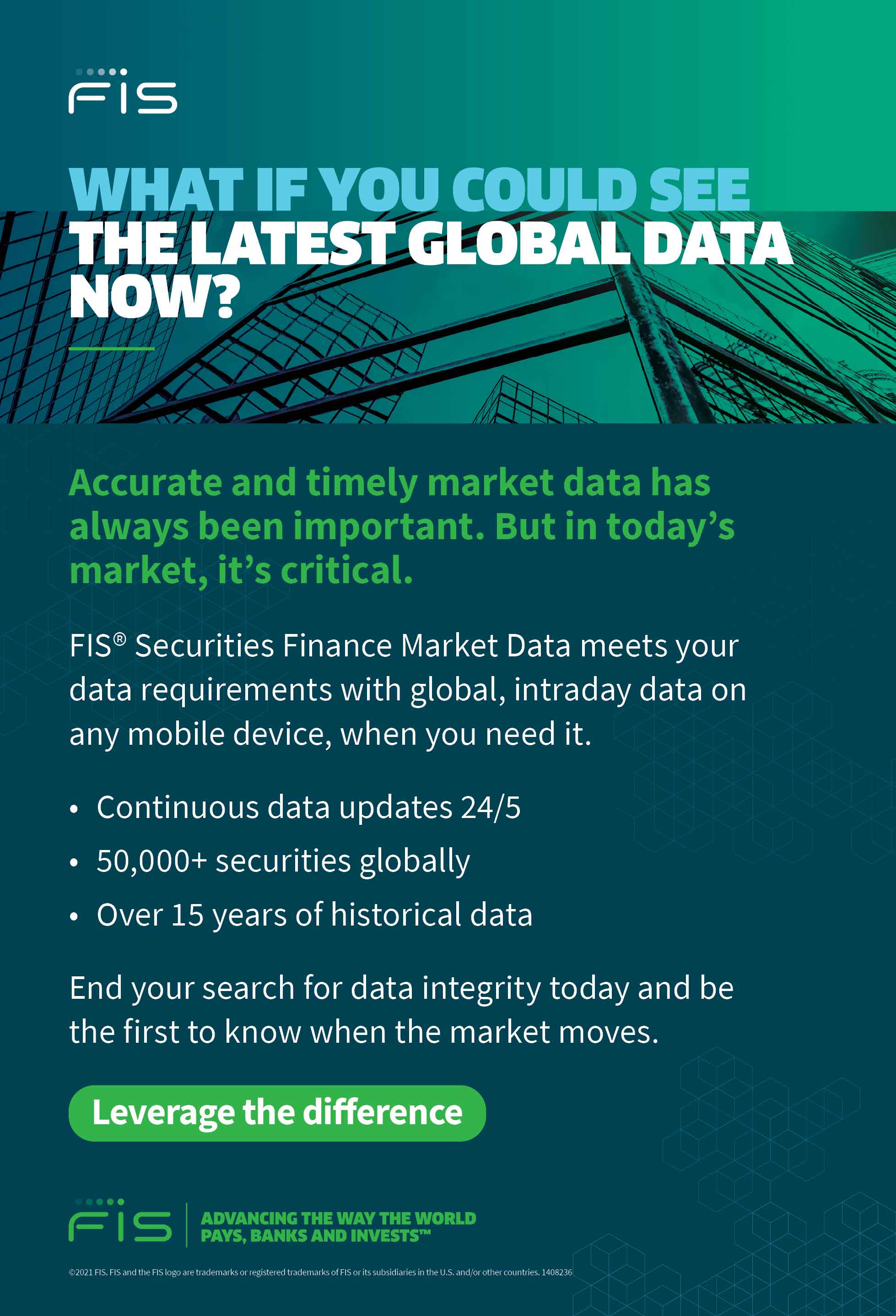Market data now in abundance, so David Lewis, of FIS’ Astec Analytics offers guidance on how to separate wheat from chaff
Data is not in short supply. Far from it
Take a moment to think about not only the data that you use as part of your typical day, but the data you create. As we all move through our daily lives, whether virtually or physically, we leave behind a trail of data that documents our every move and action. Consider the feelings of wonder and dread you experience every time you get a notification from Google Maps that your timeline is available for viewing. Think about your Strava account, which shows that you are not the best cyclist/runner/swimmer in the world or even the best on your street. These apps know where you have been, when, how often and how long it took you.
Data is cheap. It’s also valuable
The two apps already mentioned constitute a fraction of the apps out there, each swapping free access to their services for the data they gather from you in order to sell you things. The trick, however, is to be able to split the useful, valuable data from the worthless; the wheat from the chaff so to speak.
Developing a data strategy to create an edge depends on two major factors. First, the useful data (the wheat) must be separated from the noise (the chaff), leaving the data that creates some meaningful link between event and effect; the link of causation, not just correlation. The second — and equally vital — part of the strategy is delivering that data in a usable format and at the right moment. Combined, these two elements constitute the art of turning data into actionable information.
Alternative data as a commodity
As investors and analysts have sought to deliver that edge, they have turned to increasingly radical types of ‘alternative data’ as earlier elements of data become more mainstream and accessible. For example, the satellite pictures of shopping centre parking lots being used to indicate the footfall and therefore the spending patterns/levels of consumers, or the movements of cargo ships around the globe. Neither of these measures would be much use in the shadow of the COVID-19 pandemic when the majority of people are confined to their own homes, but the data they delivered did become a commodity for some as they sought to predict the economic performance of companies.
Short interest, or indeed the use of securities lending data as a meaningful proxy for short interest, was considered alternative data a few short years ago, but has, through broad global adoption, become more mainstream, pushing those seeking the edge to find other indicators in the new economic environment – the new normal. But what of the second part of the delivery of the data? Getting it to the right person, or increasingly, the right computer at the right time. Given that the term ‘computer’ was originally coined to describe a person that undertakes mathematical calculations, there is no little irony in the progression of machines into this space.
The delivery of the data has multiple factors that need to be addressed if it is going to be truly actionable information – it must show an acceptable degree of causation, be understandable and timely. Getting all three in place is not easy, but vital to providing that edge. The frequency of trading on financial markets has grown exponentially since the ‘big bang’ and the impact of financial data streams continues to undo old practices. January 2021 has seen the announcement that the last open outcry trading pit in London, the LME (London Metal Exchange), may be closing its doors for good. The pit had soldiered on through wars and economic crashes through its 144-year history, but the temporary closure due to COVID-19 may become permanent as stakeholders realise that the electronic screen trading that took over has brought new entrants and improved price transparency. Somewhat behind other exchanges that have already made the transition, the LME will likely feel the positive impact that better technology and more timely data will bring them and their clients.
Using data to drive efficiency
Financial markets are not the only commercial environments that are improving efficiency, service and profitability through the timely application of useful data. Consider the various home delivery services and online shopping. For example, have you ever wondered why some shirts or dresses sometimes appear surprisingly out of stock? Smarter retailers have systems that learn your buying patterns and steer you away from buying three of the same items in different sizes because their algorithms know that you tend to return the smallest and largest ones, wiping out their profits. Through the timely application of actionable data with proven causation, they improve their margins and decrease the cost of returns processing. They have all three sizes; they’re just not going to let you know that.
But what could this mean for securities finance? Just as with the ordering of clothes, or any other retail item for that matter, the timely delivery of actionable and accurate data is key to success.
Data in securities finance
While we have put a great deal of effort into the release of our latest generation of Lending Pit, which continues to serve more than 1,000 users with more than 100,000 pages of data each week, more and more clients are looking to our application programming interface services to support their automation strategies. With the increasing complexity of the marketplace in which we operate, it makes absolute sense to automate as much as is possible while ensuring those that focus on the higher value, more complex opportunities have all the right data and analytics at their fingertips.
Just as we are seeing with online retail shopping, advanced algorithms together with the application of artificial intelligence in our forthcoming products will ensure that the quality of the original transaction will improve. This will bring efficiency in the form of better price discovery as well as improvements in accuracy at the point of trade. Just as importantly, it also has the potential to reduce post trade costs with the reduction in errors, failed deliveries and, of course, unexpected returns. Who knew that securities finance could share so much with the online fashion industry?


